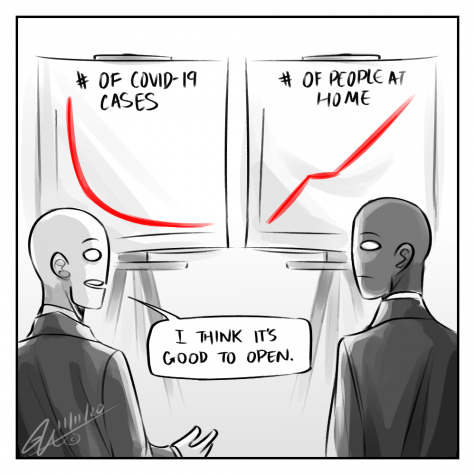Vaccines: Making Sense of the Stats
March 31, 2021
Over the course of the past few months, the world has witnessed the rollout of several vaccines for COVID-19 that show lots of promise to put an end to this nightmare of a pandemic. In a previous article, we looked into the mass skepticism behind the Covid vaccines. Based on a Pew Research Center poll, over a third of Americans are unsure about or definitely will not get vaccinated. However, there remains skepticism within the remaining two thirds; this doubt is related to specific vaccines and their effectiveness. If the details mean nothing to you, I’ll make a long story short and relay the CDC’s advice: get whatever vaccine is available to you first. For the full explanation behind this reasoning, keep reading.
Incomplete information on the vaccines has caused even those who support Covid vaccination to question the “inferior” options. When offered doses of the Johnson & Johnson vaccine to distribute to residents of Detroit, the city’s mayor initially declined; he wanted to stick to Pfizer and Moderna, claiming they’re “the best”. The mayor was well-meaning, but fell victim to a common misconception. Many look at the commonly touted ~95% efficacy for the Pfizer and Moderna vaccines, compare it to J&J’s 66%, and choose a clear winner. 95 is better than 66, right? Of course, but the context of those numbers is important to tell the full story.
Usually when describing vaccine efficacy, researchers mean the percent reduction in cases of the disease it tries to prevent. Ideally (but unrealistically), a vaccine’s efficacy is 100%, meaning there is no chance you will get that disease if you take the vaccine. While this is a solid form of measurement and important to know when evaluating vaccines, this form of efficacy is not the most important statistic for diseases like Covid that can cause a variety of symptoms, ranging from none at all to lethal ones. Even if everyone contracted Covid, a majority of people would not be threatened by it; they’d be asymptomatic or merely experience mild symptoms such as coughing or loss of taste and smell.
Our primary goal is not making sure no one gets Covid but rather making sure these mild symptoms are the worst it can do. If we shift the goal posts to match this goal, the statistics change substantially. If the goal is preventing severe symptoms, Pfizer and Moderna reach 100% efficacy while J&J holds 86%, well above the 66% they’ve been judged by. And when measuring the efficacy in preventing hospitalizations and deaths, Pfizer, Moderna, and J&J all have 100% efficacy.
What Johnson & Johnson’s vaccine may somewhat lack in Covid prevention, it makes up for in availability; with just one shot of the J&J vaccine, one is “fully vaccinated”. Some were also concerned by this fact, given that the more trusted Pfizer and Moderna are both administered in two shots. In the clinical trials, these vaccines showed only about 50% prevention efficacy about 14 days after the first shot was administered but before the second shot. After the same amount of time had passed after the second shot, efficacy reached the 90% number we’ve become familiar with.
Real-world results of these two vaccines should ease some of these concerns. When studying how the vaccine has worked out for health care workers who have received the vaccine as part of the normal distribution, not the clinical trial, researchers found the vaccine’s prevention efficacy to be as high as 80% after the first shot and still about 90% after the second. Of course, everyone who intends to get the Pfizer or Moderna vaccine should still receive both shots; however, the difference between one and two shots is far less substantial than we once thought.
So if you want to avoid dying if you do get Covid, all authorized vaccines are equally viable options. If death or hospitalization isn’t a concern for you, you’re probably not high-risk for these complications; thus, you should get whatever vaccine you can to reduce the chances of spreading Covid to someone who is high-risk.





